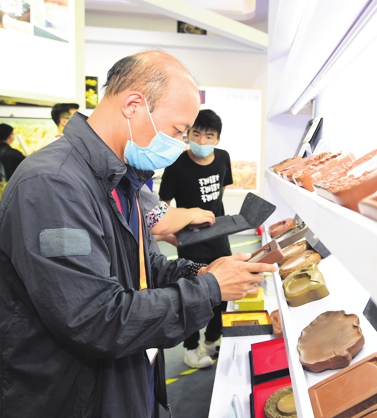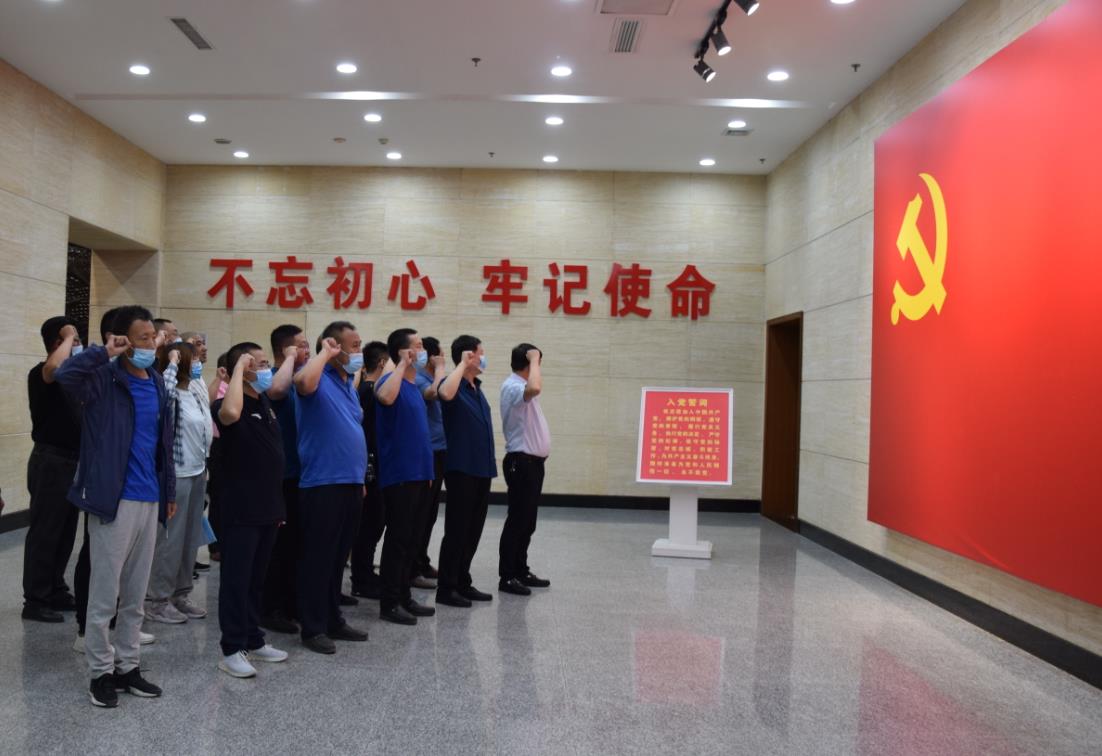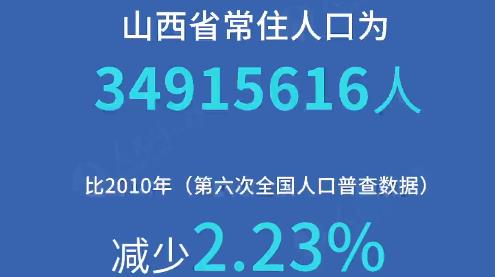
A visitor checks a chengni ink slab exhibited at the China International Fair for Trade in Service. RUAN YANG / FOR CHINA DAILY
During the China International Fair for Trade in Services, which was held in Beijing on Sept 4-9, three unique art forms from Shanxi province got much attention from visitors.
On display were fahua ware, hand-polished lacquerware and chengni ink slabs, which are referred to as three precious treasures in Shanxi.
Fahua ware, which refers to Chinese porcelain with a bold, deepblue decoration and colorful glaze, is an intangible heritage item unique to the southern region of Shanxi.
Fahua ware is regarded as the ceramic version of cloisonne, where the design elements are separated by copper wires.
At the booth displaying the fahua ware, Qiao Lin, boss of Qiao's Fahua Ware and the 28th-generation inheritor of the technique that has a history of more than 300 years, was happy to introduce the exhibits to visitors.
"We received a great number of visitors and were asked numerous questions about the art," Qiao said, adding that she is proud to be a promoter of the ancient craft.
Some of the exhibits were made by Qiao herself, who incorporated modern, fashion elements.
At another booth, Liang Zhongxiu, a master in hand-polished lacquerware, introduced the history and features of this ancient cultural heritage in Pingyao, a county in central Shanxi.
"Renowned as one of the top four lacquerwares in China, Pingyao's lacquerware, especially the hand-polished variety, is a brilliant representative craft in China," Liang said.
The hand-polished lacquerware of Pingyao is made of a natural raw lacquer unique to China and varnished by hand using a special technique.
Through embedding, sculpting, carving and painting, the lacquerware is decorated with patterns of mountains and rivers, flowers and birds, figures and pavilions, according to Liang.
Lin Tao, from Jiangxian county, who brought his own chengni ink slabs to the fair, is one of the masters who revived an ancient technique that had been lost for more than a century.
Chengni ink slab is one of the top four ink slabs in China, along with duan in Zhaoqing, Guangdong province; she in Shexian, Anhui province; and taohe in Zhuoni county, Gansu province.
Unlike other ink slabs, which are made from natural stones, chengni in Jiangxian is produced by firing a silt-rich clay collected from riverbeds.
The technique for making the clay-fired ink slab is said to date back to the Han Dynasties (206 BC-AD 220). It was lost during the Qing Dynasty (1644-1911).
Lin Tao and his father, Lin Yongmao, decided to revive this ancient technique in 1986.
After intensive research and much trial and error, they succeeded in making three chengni ink slabs in 1991. In 1994, their ink slabs won a gold prize at the China Expo of Famous Ink Slabs.
"In the process of reviving the art, we have learned a lot from the traditional culture of Shanxi. By displaying our craft here, we are presenting the Shanxi culture to visitors worldwide," Lin said at the fair.
Li Yali contributed to this story
By YUAN SHENGGAO
 山西路桥:党建引领 建好“四好农村路”山西路桥建设集团党委扎实开展“党建质量提升年”,实施“六大工程”,立足“十四五”高质量、高速度、高效益发展的战略基点,全面提高党建质量和党建引领发展水平,为打造“国内一流的交通基础设施投资、建设、施工现代化企业集团”提供坚强政治保障。
山西路桥:党建引领 建好“四好农村路”山西路桥建设集团党委扎实开展“党建质量提升年”,实施“六大工程”,立足“十四五”高质量、高速度、高效益发展的战略基点,全面提高党建质量和党建引领发展水平,为打造“国内一流的交通基础设施投资、建设、施工现代化企业集团”提供坚强政治保障。
 常住人口3491万 山西人口普查数据"出炉"山西省统计局向社会通报山西省第七次全国人口普查主要数据。数据显示,山西省常住人口为34915616人,比2010年(第六次全国人口普查数据,下同)减少2.23%,年平均减少0.23%。山西省常住人口总量减少,主要受人口流动变化等因素影响。
常住人口3491万 山西人口普查数据"出炉"山西省统计局向社会通报山西省第七次全国人口普查主要数据。数据显示,山西省常住人口为34915616人,比2010年(第六次全国人口普查数据,下同)减少2.23%,年平均减少0.23%。山西省常住人口总量减少,主要受人口流动变化等因素影响。